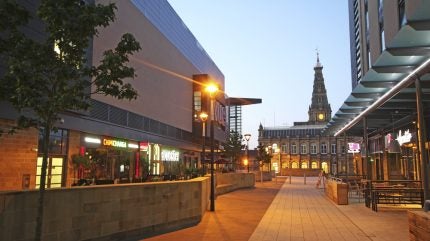
Investor appetite for retail real estate is growing rapidly, with demand for UK high street property surging by more than 50% over the past year.
The latest figures from real estate analysts and market reports show renewed interest in both prime and secondary locations, driven by stabilising interest rates and signs of retail resilience.

Discover B2B Marketing That Performs
Combine business intelligence and editorial excellence to reach engaged professionals across 36 leading media platforms.
Property investment volumes rise amid stabilising interest rates
According to industry data, retail property investment across the UK rose by 35% year-on-year in the first half of 2025.
High street assets accounted for a significant portion of that increase, with investor activity climbing 56% as confidence returned to town and city centres.
Analysts suggest the uptick is being fuelled by more stable monetary policy, with the Bank of England holding base rates steady since early spring. This has encouraged institutional and private investors to re-enter the commercial property sector after a prolonged period of caution.
Retail warehouse parks and convenience-led assets are also gaining traction, but traditional high street units are seeing the sharpest rebound in demand.

US Tariffs are shifting - will you react or anticipate?
Don’t let policy changes catch you off guard. Stay proactive with real-time data and expert analysis.
By GlobalDataRetailers recalibrate store strategies as footfall improves
The shift comes as retailers adapt their physical store strategies to reflect new shopping behaviours.
Despite the growth of e-commerce, footfall in many towns and cities is gradually recovering, boosted by hybrid working patterns and improving consumer sentiment.
Retailers are showing a renewed willingness to invest in flagship stores and experiential formats, particularly in areas with strong transport links and mixed-use development potential.
While challenges remain for smaller towns with high vacancy rates, active lettings in key locations are encouraging property owners and developers to unlock previously mothballed projects.
Some investors are also seeking out distressed retail properties with the aim of repositioning them for food, leisure or community-focused use—highlighting the growing trend towards diversification in retail real estate.
Market outlook driven by mixed-use demand and regional growth
Looking ahead, analysts expect retail property activity to remain elevated in the second half of the year, with mixed-use development seen as a major growth driver.
Projects that integrate retail, residential, and hospitality elements are attracting significant interest from domestic and overseas buyers alike.
In particular, regional cities such as Manchester, Birmingham and Leeds are experiencing notable investment flows, reflecting both population growth and strong local economies.
London continues to lead the market in terms of transaction volumes, but regional high streets are closing the gap as regeneration schemes gather pace.
With consumer inflation showing signs of easing and labour markets remaining stable, sentiment in the retail property sector is expected to hold firm.
The demand for retail real estate may not yet have returned to pre-pandemic highs, but the sector is showing clear signs of a steady and broad-based recovery.





